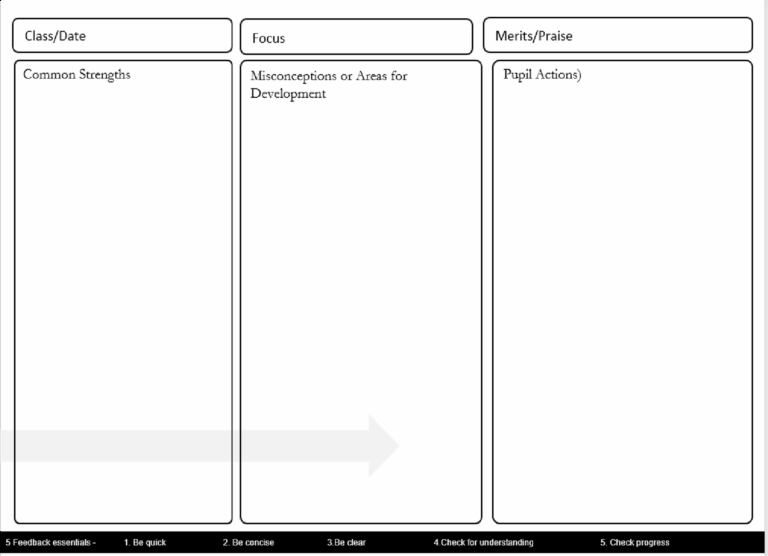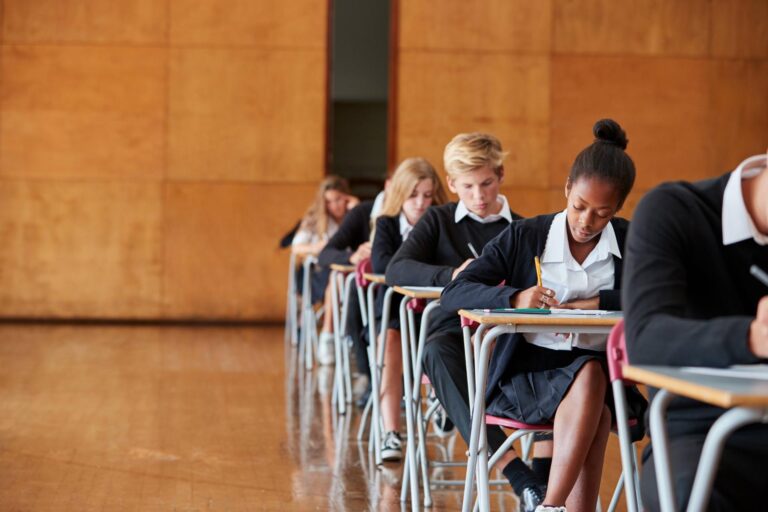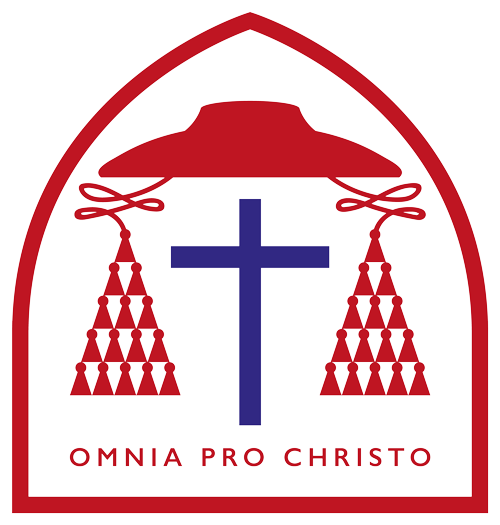At Cardinal Wiseman the curriculum is the progression model. This means that our assessment is focused upon how much of the curriculum has been learned and understood. Assessment is focused upon specific knowledge taught within the curriculum and not generic knowledge/transferable skills.
Through our assessment and reporting practice, we aim to:
- Use formative strategies to enable pupils to understand what they have to do to reach the next steps in their learning
- Allow teachers to determine what a pupil can/cannot do and help them to plan future support to fill in any gaps in knowledge and understanding
- Create an appropriate assessment system in KS3 which supports future learning at KS4 and beyond
- Ensure that summative assessment is carried out according to a set of assessment principles to allow valid inferences to be made about the data
- Give parents a clear idea of what their child can do and what they need to do to progress
- Provide information that can be used to evaluate teaching and learning practice Enable all pupils, including those with SEND, to make good progress
Formative Assessment
Formative assessment, often referred to as Assessment for Learning (AfL), has been defined by William as when teachers ‘use evidence of student learning to adapt teaching and learning, or instruction, to meet student needs’.
Formative assessment at Cardinal Wiseman is specific, frequent and repetitive.
- Specific questions allow teachers to diagnose exactly what a pupil’s strengths and weaknesses are. Short answers and multiple-choice questions can be very precise.
- Frequent formative assessment allows the teacher and pupil to see if the pupil has understood it or not, so they can act quickly in response. However, research has shown that the act of recalling information from memory actually helps to strengthen the memory itself. In other words, testing doesn’t just measure knowledge, it strengthens it.
- Repetitive tasks ensure that knowledge is committed to long-term memory. Often a pupil can perform well in the short-term without having fully learnt something. Repetition allows for learning to a mastery level and will ensure that learning is embedded before deeming it to be secure.
Examples of formative assessment may include:
1) Key word and definition tests
2) Spelling tests
3) Multiple-choice quizzes
4) Memory tests
5) Essay-style answers (with formative feedback)
6) Question-level analysis on past papers (more useful with simple/closed questions)

Marking and feedback
● When reviewing pupils work, staff must consider common strengths, misconceptions, students who require praise, students who need specific intervention and then outline the next steps pupils need to make to progress. This is done via ‘whole class feedback.’

Summative Assessment
Targets
There will be no attempt to map progress over KS2-KS4 to predict GCSE outcomes from as early as KS3. The uncertainty around 9-1 grade boundaries and expectations creates too much uncertainty to make accurate predictions. Such shared meanings are also not easy to create, and they impose restrictions on the design and administration of assessments. As a result, we will leave such summative judgements until KS4 where national data supports this process.

Process for summative assessment at KS3
In order for the measures of attainment and progress described above to be accurate and robust, it is essential that all formal examinations are carried out according to a set of key principles. The process used at KS4 will also be used in KS3 (not repeated in this section – see above). There are, however, some important things to note at KS3:
- No formal examination papers exist so the assessment process (creation of paper, mark scheme, moderation) has to be created and owned by subject leaders and teachers. As a result, a significant amount of CPD and monitoring will take place in KS3 to ensure that the assessment process is rigorous and robust.
- No summative judgements, such as GCSE grades, will be produced as there will be no way of accurately identifying mark boundaries with one cohort. As a result, we will use relative performance indicators such as the rank order in a year group to identify where pupils are performing in relation to their peers.
- No targets will be shared with pupils, but we will use the prior attainment of pupils to help us to analyse data and report on progress to parents.
Data Analysis at KS3 Measuring attainment: Year group & class group order
In place of GCSE grades, flight paths or levels, progress and attainment will be measured using raw scores from summative assessments which will be relative performance indicators within the specific cohort. KS2 prior attainment (where available) will be used to make judgements about progress in relation to ability levels. Whilst this is not a true measure of progress against a set of fixed points such as attainment levels, it is a true and accurate measure that can be used as a proxy for progress.
- Students will be ranked according to KS2 (or CAT4) scaled scores and separated into 10 progress categories according to their rank in the year group. Top performing students, in the top 10% will have an EAP grade of ‘10.’ A student in the bottom 90% will have an EAP grade of ‘90.’
- After a formal assessment week, students will be ranked again according to their score in each subject making a comparison between their EAP grade and their actual grade.
- The EAP difference will help to identify patterns for critical cohorts.
- This system therefore works on the theory of a bell curve distribution, with an equal number of pupils being below average as those who are above average. It is about peer-to-peer comparison and is very specific to the cohort of pupils being tested, and to our school
Process for summative assessment at KS4
There will be two assessment points in KS4.
- Each test will sample the knowledge, skills and understanding covered in the curriculum up until that point. In other words, if Assessment Point 1 is in January of Year 10, the test will cover everything taught between the start of the course in Year 9 and the January of Year 10. In theory, this will also include testing that which was learned at KS3 as well, as a GCSE specification tests things learned at KS3 as well at KS4. This means pupils are building up the volume of material which has to be learned for each test and therefore preparing for the terminal examination.
- All classes must follow the same scheme of work to ensure that the test results are accurate and reliable – for example, the same content must be taught to all classes (unless in sets) and the same amount of time given to homework and revision.
- Revision materials will be provided for each test and these will be scrutinised by line managers and assessment leads to ensure quality and fit-for-purpose. An agreed revision period will take place in lessons and relevant revision homework will be set.
- Each test will be written mirroring the style (language, layout, structure) of the GCSE paper in that subject. In practice, past exam papers or parts of them should be used to help this process. Careful consideration must be given to the questions selected to ensure that enough of the sample is being tested. The difficulty of the questions must also be scrutinized to ensure that there is a good spread of difficulty in the questions, with lots of moderate difficulty questions where possible.
- Each test will be marked out of at least 50, to ensure that there will be a range of marks achieved
- Each test will be marked using a mark scheme that is similar in structure to a GCSE paper mark scheme (or an actual GCSE mark scheme where possible)
- Each test will be moderated within the department to ensure fair application of the mark scheme
- Each test should be followed by a period of independent work to address areas for development as highlighted by the test. This must be submitted and kept with the test as evidence of ‘gap filling’ knowledge. This could include question-level analysis where possible and feasible to do so.
Reporting to parents
Keeping parents up-to-date regarding assessment information, along with other aspects of school performance, is crucial. This is done through the following means:
- Reports – reports provide an update on certain aspects of school performance. All subject teachers within the relevant year group will enter the percentage from the summative assessment. Reports will also include a judgement for attitude to learning and homework. A front sheet with clear guidance will be included to explain the data to parents in an appropriate format and language. The data will also be available to view in the SIMS Parent App.
- Parents Evenings – Yr 11 parents evening will take place in Autumn 1 after a pastoral data drop. GCSE predictions will be shared with parents, alongside data from the summative summer series. Other parents evenings (Yrs 7-10) will take place after the first data drop in order to react from the inferences made from the first set of summative assessments.
The parents evening will have two key themes:
- Target setting – the outcomes of the report will make it clear as to which areas are for development. There will be an opportunity to agree targets based upon the outcomes of the report.
- How can parents support their child to meet their targets – there will be a focus at parents evening on the ways that parents can support their child. This will include sharing strategies, resources and including aspects of parental support in the target setting.
- End of year reports – another report will follow the second and final assessment point, at the end of the academic year which will contain the same information as the first report (percentage on assessments, attitude to learning and homework.

